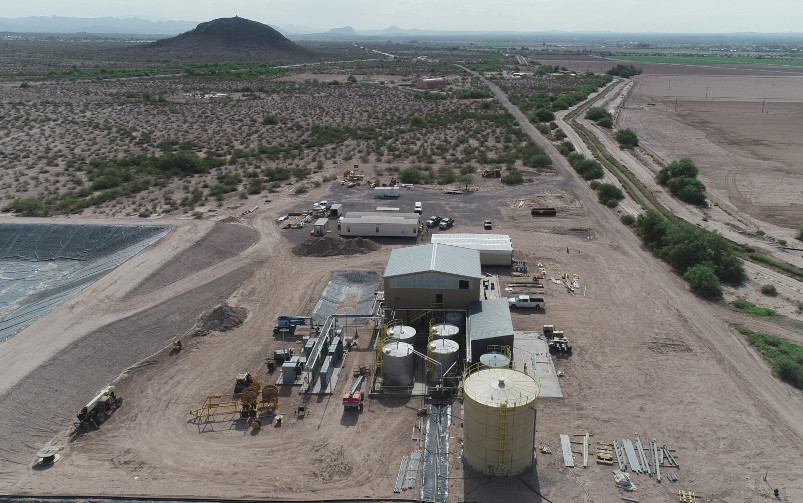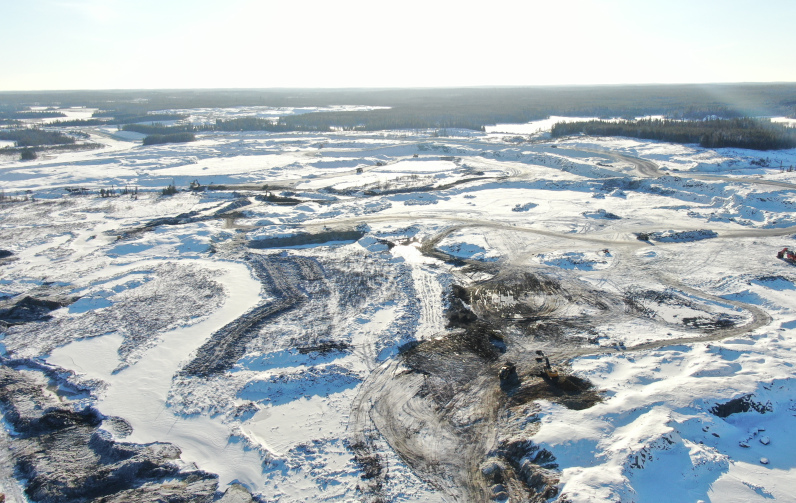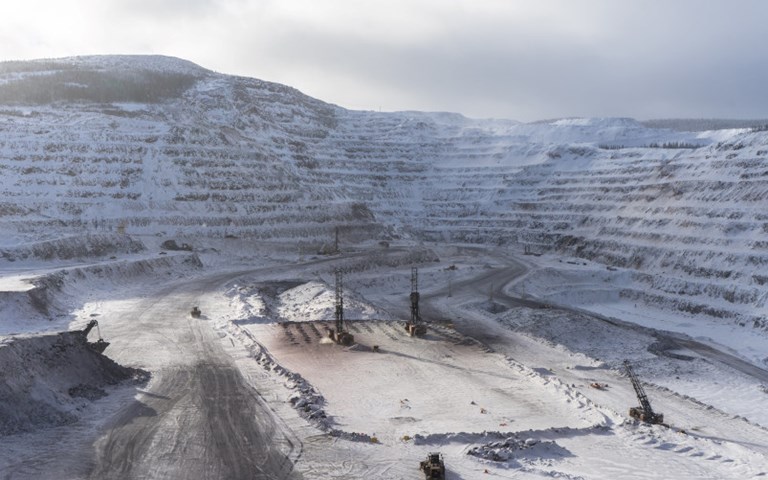Mining companies Teck Resources and Rio Tinto, who's iron mine in Labrador City, Quebec is pictured, are major sponsors of the MMAP project. Courtesy of Rio Tinto.
On Feb. 1, Canada’s Digital Technology Supercluster, an organization that focuses on accelerating digital technology innovation, launched the Mining Microbiome Analysis Platform (MMAP) project. The project will build a repository of microbes and geochemical data, using samples collected from more than 15,000 mining sites.
MMAP is led by Teck Resources in partnership with the University of British Columbia (UBC), BGC Engineering, Koonkie Canada, Rio Tinto, Genome BC, Allonnia, Microsoft and the Centre for Excellence in Mining Innovation (CEMI). Over the next two years, the online platform will extract DNA from mining-site samples and identify microbes that can be used to implement microbial-based resource extraction and new mine-site bioremediation processes.
John Steen, director of the Bradshaw Research Initiative in Minerals and Mining (BRIMM) at UBC, described it as “a genetic library for microorganisms that inhabit mine sites.”
Steen explained that microbes have been around for billions of years, and they have been around metals for almost as long. Many microbes and genes have evolved “little tricks” to process metals, extract metals, or leave others behind. The goal, he said, is to create a library of these microbes and genes and use that data in collaboration with other companies to develop new technologies and make them profitable.
Using microbes is nothing new to the mining industry. For example, hydrometallurgy, a process that has been used since the 19th century, Steen said, uses aqueous solutions to process ore. Microbes have also been studied for use in waste material remediation as well.
“The idea that microbes can help us in processing, in waste management – it’s not new, but what is new is being able to dial up the function that you want,” said Steen, “We're taking a process that’s actually very old, and really speeding it up to be relevant to mining in the 21st century.”
Related: Through advanced technology, tailings are shedding their bad rap and becoming a key solution to today’s mining challenges
At the end of the two years, Steen said, researchers will have a proof of concept with a database of samples, the analysis of all the microbes that are in those samples and their genetic coding. They will also identify gene sequences with a range of different functions.
He said this sets a starting point for other companies to build it out.
“Like one of those little street libraries. You start out with a few books, and then many, many other people add books. And then over time, you’ve got a very big collection of books,” he said. “This will grow, and it will become more powerful as a platform for new technology over time, but the two years – thats just the beginning.”
This technology will also lead the way in creating more environmentally conscious mining practices, with the MMAP project being referred to by the Supercluster as a “catalyst for sustainable mining practices on a global scale”.
“Our Supercluster is focused on developing, deploying and scaling digital solutions to big world problems,” said Sue Paish, CEO of the Digital Technology Supercluster, “Certainly one of the big world problems we are facing right now is reducing the environmental impact of our natural resources sector, while at the same time [developing] better global competitiveness for our mining sector, and making sure that we are helping Canada hit the very ambitious, net-zero and decarbonization targets we have.”
Paish explained that it’s no secret to big mining companies like Teck Resources and Rio Tinto that reducing environmental impact in the mining sector is a significant priority for Canada. The MMAP gives these companies another avenue to pursue their environmental targets.
“It’s a global game-changer,” she said. “Because what this technology will do is reduce the use of chemical and other potentially environmentally harmful products that are currently used in the mining sector and in the extraction process and will instead leverage the intelligence that we gain from analyzing the genome and other genetic material in and around ore deposits to…accelerate the extraction.”
She said this project will potentially transform the global mining sector from one that is heavily dependent on chemicals in the extraction process, to one that uses the microbiome of soil in and around deposits to facilitate extraction.
“In effect, what this project is going to do, is it’s going to help Canada and Canadian industry own the podium, in the same way that we strive to own the podium in international sporting events,” she said. “As Canadians, let’s go own the podium in innovative, industrial pursuits. And let’s be proud of the work of our researchers and our innovators and our industry leaders.”




